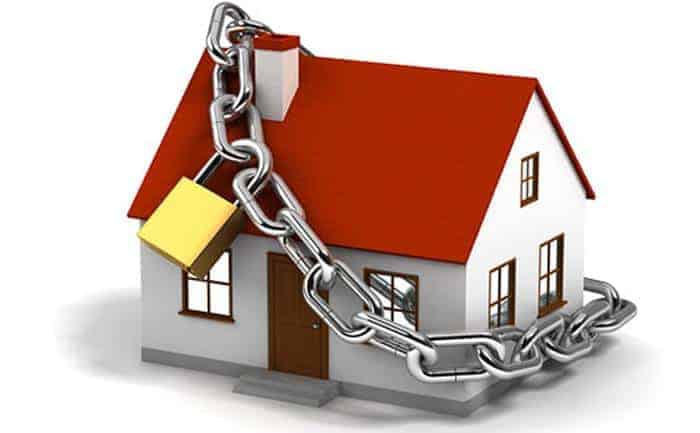There is no one-size-fits-all solution to home security, but evidence-based strategies can help keep your home and family safe.
Home security statistics can provide insights into the most effective ways to protect your property.
Reviewing home security statistics can help you identify vulnerabilities and target solutions that will work best for your specific situation.
Taking the time to understand the risks inherent in your neighborhood and environment is an important first step in keeping your family safe.
By implementing some simple security measures, you can make your home a more difficult target for burglars.
The following blog post will review recent home security statistics and offer practical tips for protecting your property.
Thank you for taking the time to read this blog post! I hope it helps you make informed decisions about protecting your home.
The average American home has 2.5 occupants
Home security is an important consideration for Americans, particularly in light of the fact that the average American home has 2.5 occupants.
Home security data from recent years reveals that crime rates in homes with only one occupant are significantly lower than in homes holding two or more people.
Homeowners should be aware of these statistics when considering their security needs and overall safety plan for their property.
Additionally, neighbors should keep each other informed about any suspicious activities and report anything out of the ordinary to the police to ensure community-wide safety.
60% of burglaries are committed during the daytime
Home security is a priority for many households, and it’s of particular importance to be vigilant during the day given the statistics reported by the police.
According to home security data, approximately 60% of burglaries are committed between 9 a.m. and 5 p.m., when residents may not be home and businesses may be closed.
Homeowners should ensure that any pathways around the property are adequately lit and enclosed and that their doors have secure locks in order to dissuade any potential criminals from targeting their homes.
Most burglars gain entry to a home through an unlocked door or window
Home security statistics and data reveal that the most common point of entry for burglars entering a home is typically an unlocked door or window.
Homeowners should be diligent in taking steps to secure entry points since burglaries typically only take a few minutes and often go unnoticed until it is too late.
Installing robust locks on doors and windows, using a security system, trimming shrubbery around entry points, and purchasing timers for lighting are all great measures to increase home security.
Homeowners who take responsibility for their own safety can help deter criminals and prevent burglaries.
The most common items stolen from homes are electronics, cash, and jewelry
Home security should never be overlooked. Home burglaries are a serious issue, and each year numerous valuable items, such as electronics, cash, and jewelry, are stolen from homes all across the world.
Home security statistics show that electronic items such as laptops, tablets, smartphones, and gaming consoles are three of the most common items stolen, followed by cash in the second position and jewelry in the third.
Homeowners need to take extra measures to protect their home items with techniques such as permanently engraving valuables that can’t be physically secured or adding motion-sensitive exterior lighting to discourage thieves.
With a few precautionary steps, one can ensure not only personal safety but also the protection of their belongings.
Homes without security systems are three times more likely to be broken into
Home security is no laughing matter. Data reveals that homes without a security system are three times more likely to be broken into than those with one.
This should make homeowners sit up and take notice, particularly in neighborhoods with a history of break-ins.
Home security products continue to become increasingly sophisticated and user-friendly, making it easier for homeowners to properly protect their own property than ever before.
But don’t take our word for it; do the research and get informed about home security data, trends, and tips to maximize your home’s safety and comfort today.
Installing a home security system is the best way to protect your home from burglars
Installing a home security system is a great way to take extra measures to protect your home and belongings.
It allows you to monitor who enters or leaves your property and can even be programmed with motion sensors that will sound an alarm if anyone attempts to enter without permission.
Security systems are readily available and can come with features like tamper-proof locks, security cameras, and voice intercoms.
All of these components work together to guard against intruders, monitoring the area 24/7 so you can sleep soundly knowing your home is safe and secure.
Having read through the facts about home security and burglary, it is clear that installing some sort of home security system can go a long way in protecting your home and possessions.
While burglary statistics fluctuate and there are many factors that increase or decrease your chances of being affected, having a good monitoring system in place is one of the best ways to ensure maximum protection.
Not only do these systems alert you to any potential danger, but they also keep an eye on all areas within your house.
Despite other options such as alarms, cameras, and even guard dogs, security systems provide the most reliable line of defense against burglars.
Homeowners should be careful to research the different types of systems available to them as well as their local laws pertaining to home security installation.
Ultimately, with the right preparation and precautionary measures in place, you can rest easy knowing that your home is secure from harm.
If you would like more information on how to choose the right security system for your home, check out our website for more detailed advice and resources.
Learn more about Home Security
